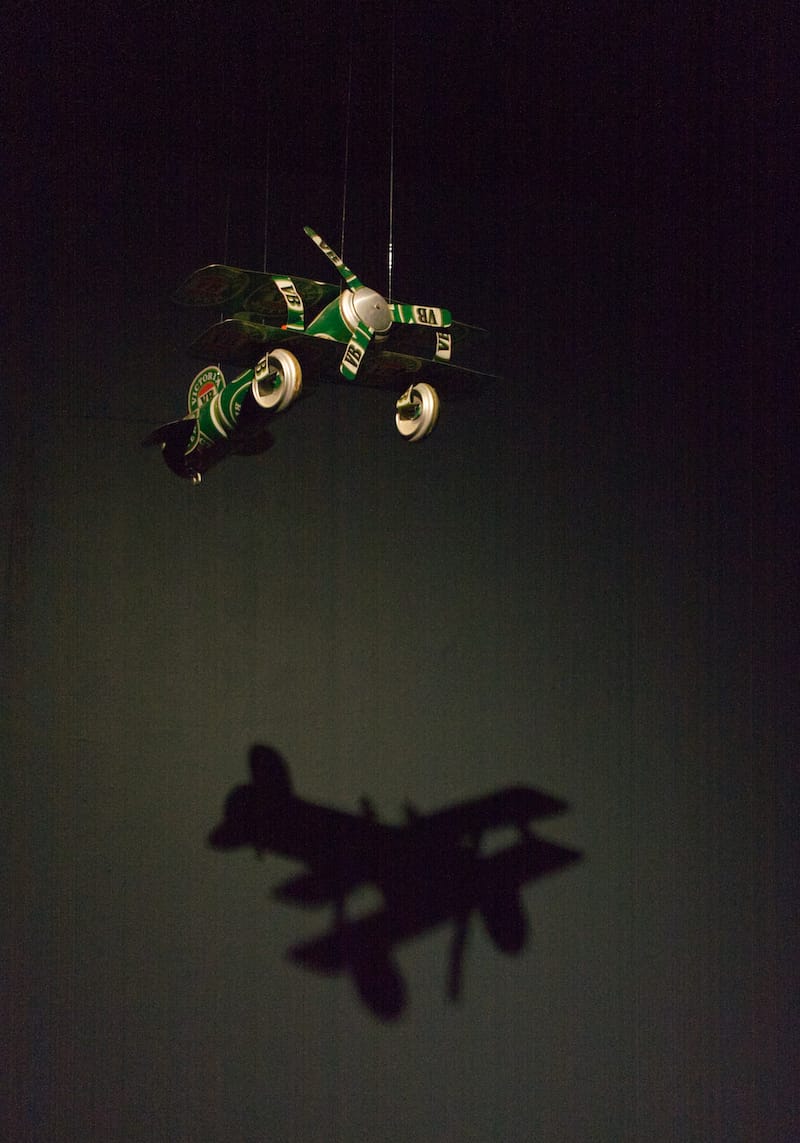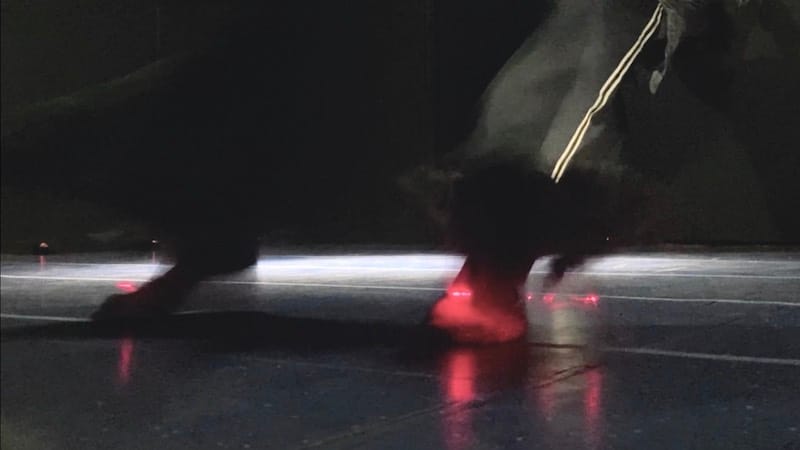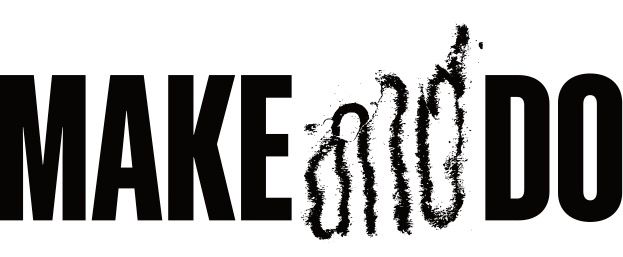Rags, bags etc | January 2024

And with this missive Make and Do is over half way to being a whole year old – which is nuts.
Thanks for all the support, Art Fans.
I am gratified to think that culture and its discussion can hold any place at all in this late-capitalist hellscape, but maybe that’s the point. I keep wondering what art can do, or what it’s for, and then I read that Refaat Alareer, Gazan poet and intellectual was killed, and his art is all that is left of him, and it becomes impossibly important.
I think the biggest question I have, that relates to art, is the complex relationship we have with the value of art, how that value is constructed and what it means. Value, I think comes from what I can learn or feel, but it can also come from beauty, from puzzlement or form something just being aesthetically pleasing. This often has no connection with what a work of art might have cost, or what it is said to be worth. Worth and value may have no connection at all for some, and be everything to another person.
The cultural recommendation for this time around is the Great Women Artists podcast. I imagine most of you are already onto this, and I’m late to the party because I spend all my free time reading horror fiction and listening to radio is a foreign country . What I’ve heard thus far is excellent and you can really jump in anywhere: Episode 121 with Lauren Elkin on Carolee Schneemann and Hannah Wilke is a total cracker, but choose your own adventure.
Finally, it’s Invasion Day 2024 and there’s been some "vandalism" in Melbourne. This is, as they say, very controversial, and there’s a huge debate to be had about statues and their removal. Something like this has been coming in Australia for a while, and if councils and governments don’t want things like this to happen, they need to listen to what communities are telling them, because it’s time for this issue to be really addressed.
I know exactly why this is happening; change is not coming: it is here.
If our elected officials do not do something, the people will, because they pretty much always have.
Reece Romagnoli-Townsend: Rags to More Rags
Presented by Constance ARI at Plimsoll Gallery
13 – 25 January 2024
I don’t know Reece Romagnoli-Townsend. It’s an odd thing to say, isn’t it? I often see work from artists I don’t know. I just see the art and it does what it does and I wander off to the next thing, sometimes unmoved, sometimes not.
Rags to More Rags is about Reece’s father, Rags, who died a few years back. Reece and Rags clearly loved each other, as families are supposed to, and you can see that in this show, which is Reece taking all the things and the photographs and the fragments that are left of Rags – photographs and objects and bike riding leathers and whatever else, and sharing them.
Everything here has been shared in a caring and respectful manner. There’s a lot of consideration, and the aesthetic context of someone’s shed or garage or communal space – a pool room or something like that – is preserved. And it’s odd: I can sort of hear Reece, whom I do not know and have not met, telling stories about his dad, who is gone, who Reece clearly misses.
I can’t quite put this in the terms I’d usually write about an art show, but when I looked at the wall mounted selection of Rags’ treasured objects, which are placed with great reverence, I get this idea that Reece is making a portrait of not of his dad, but what his dad liked: what he was into, what he got up to in his shed on a Saturday evening. It’s an attempt to re-visit Rags as a person who had interests and hobbies and liked things, and could tell you a story, because all the things here are stories, that came from somewhere. It’s a remembered conversation, it's the feeling of exchange, of being with someone. It’s not a static portrait in objects; there is a quiet vibrancy here.
I visualise Rags telling Reece why this object was important to him, or that it had some sort of value; not just the value, but the story. The why, the how. I think of the chat, the yarn, all the yarns.
I don’t mean monetary value[1]. None of the value here is based on money. The objects here now exist outside of what money means (if they ever did exist there). In one room there’s a model plane, and it’s made out of VB cans, and it’s hung quite high and there’s a shadow cast on the gallery wall and it looks impossibly cool, it looks significant, it looks important. It’s just a plane made out of VB cans and perhaps you’ve seen one and they’re cool but they’re not gallery art... Are they? What a question[2]. Of course, it is – it’s beautiful. Here the VB plane is a thousand metaphors, memory filtered with time and distance, just out of reach, flying high, solid, ephemeral, ineffable. Flying to heaven. Well maybe that’s a bit much, but the VB can plane in the Plimsoll is amazing, and I was surprised by it. The context made it so different, and I wondered about my own baggage and everything I’d been taught about art. About who makes art about how it is made and who it’s for.
There are photos of Rags all around one gallery space. A collection of photos that describe the arc of a life. Some of them – all of them really – are beautiful, striking images. Rags often has a cigarette in them, often has a kind of cheeky look. In one incredible image Rags is carrying a decent catch of fish on some sticks. Rags is pretty pleased; this was a moment well worth saving. I learn Rags probably liked fishing, and I think again about money and how we always need it except when we don’t and how maybe this was moment of living like that, just for a bit. There’s Rags’ bike riding outfit – Rags seems to have been involved in the motorbike scene – and it’s been patched and worked on by Reece.
The show is filled with such connections, subtle, sensitive: it’s all patchwork, the careful stitching of frayed edges.
There’s so much in this show. Family sits at its core, but so does culture, and what really comes across is how rich this is; and how much Reece is sharing something incredible intimate. I was really enchanted, and I found so much to enjoy on a visceral and cerebral level – there’s a strong aesthetic being shared that is linked to ‘folk art’ or ‘vernacular art’ but, more importantly, its good art, and by good, I mean: moving and thoughtful, and that’s really what I want to see, and feel.
I don’t know Reece Romagnoli-Townsend. After viewing this show though, I think he seems like a decent human. I think I’d like to meet him, and get him to tell me more yarns about Rags.
[1] Although money, or the lack of money, is implied by the title, which is a play on the cliché, from rags to riches; which is one of the core narratives of capitalism: if you work really hard and are truly talented you will become wealthy or famous, which is equal parts true and an absolute con – the implication being that some people remain poor because they’re lacking somehow, or do not deserve to succeed, or are not one of god’s chosen people, or something like that. A class narrative does hover in the background of this exhibition, for certain, but it’s not the focus, and to really invest in it might be a red herring; but I can suggest that Rags had a very rich life and people who loved him, and still do.
[2] A lot of what’s really amazing about Rags to more rags is how much it asks what art really is, and why we enjoy it; this act of sharing a personal archive is fantastic art, and it works on a powerful emotional level, while also undermining and asking questions about what is constructed as art by the ‘art world’ – where is value? Is it the price tag or is it what something means to someone, what it comes with. What does this thing mean to you? What is the story you tell around it?

Callum Cusick: Texture Channels (Tic Tac Toe)
Good Grief Studios
5 - 21 January 2024
I love sound art. One of the things I really like about it is that its temporal – in order for anyone to engage with sound art they have to give it at least a bit of time. It’s not like a painting show you can walk around in three minutes then head outside to drink free wine and smoke; you have to do the chunk of time required, which is often really not long at all, but you still have to do it.
I think this is why a lot of people get annoyed with sound art: it’s asking something of them. This is interesting in itself. It’s also hard to sell sound art (although of course people do it) so it turns into something you can experience and recall but never own, unless there’s, you know, an album made of it you can buy, but it’s still different anyway.
Sound art, by its very nature, asks what art is and how you experience it.
Callum Cusick's work is one you need to interact with, and it’s possible you might take a minute to work out what’s going on. Cusick has made a device with multiple lasers all running just about the floor, and if you walk through a laser it triggers a sound, and that sound can have it’s speed affected and more than one person can trigger a sound or the sounds speed at once, because there are multiple trigger lasers. So it’s sound art, that’s an instrument, and to really get it firing, multiple people can be in the space, and there’ll be sound going everywhere.
I had a bit of a go. It was hilarious.
The instrument/installation/sound art is kind of messy, and kind of vibrant, and all about getting in and just playing with it. A recording could be fun to listen to, but the whole point was the image it gave me of a cascading slide of randomised sounds churning as people moved in the room. That’s the art here: the sound is great, but the potential for it be fiddled with, and for chaotic composition to emerge as people interact with each other, and dance about – because you do end up dancing with this thing, without knowing it, you dance and instead of dancing too music you make music – or sound art – that’s chaotic and silly.
This is art that invites you in, that needs you to complete it, to make it work. It’s not just work you have to give time. You can’t be the audience. You become complicit, involved, and implicated.
I really hope Callum installs this again somewhere, and I can get a whole lot of small children to come along and go wild, which would extremely hilarious, and make for a really good recording.
Thank you for being a subscriber to Make and Do.
If you like Make and Do you could do us a solid and share this link with your friends and family. We also bloody love it when people re-share our Instagram posts and/or follow us.
